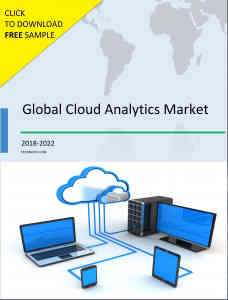Analytics is all the rage these days in almost every business vertical, and for good reason. From strengthening customer loyalty to driving robust productivity gains, the comprehensive data available on customers holds the key to improving the business’s impact. Now, the world of analytics is evolving and moving into the cloud, and the list of advantages attributed to the nascent cloud analytics technology is irresistible to businesses of all sizes.
Cloud analytics- Key enabler for big data insights
Two IT technologies are currently top priorities for enterprises around the globe: cloud computing and big data analytics. Big data analytics offers valuable insights that can spark innovations, create competitive advantage, and drive increased revenues. As a cutting-edge delivery model for IT services, cloud computing is capable of enhancing business productivity and agility while allowing for greater efficiency and reducing costs.
 Increasingly, the focus of organizations has been on the ways that cloud will power data analytics. Today, mobile and cloud technologies are offering enterprises of all sizes opportunities to use big data and analytics to make improved, data-driven decisions. New generation cloud platforms coupled with big data bring analytics and operational applications together to deliver demonstrable ROI.
Increasingly, the focus of organizations has been on the ways that cloud will power data analytics. Today, mobile and cloud technologies are offering enterprises of all sizes opportunities to use big data and analytics to make improved, data-driven decisions. New generation cloud platforms coupled with big data bring analytics and operational applications together to deliver demonstrable ROI.
Here are the top 5 ways cloud business intelligence is impacting businesses of all sizes.
1. Improved performance and best-in-class scalability
Either because of lack of expertise and tools, high latency connections, or the absence of an efficient data warehouse, several in-house analytics platforms go through critical scalability and performance issues. Latency is one of the challenges that always had a major impact on performance and scalability of analytics platforms. These challenges can be overcome by implementing direct integration between analytics and data in the cloud. Also, enterprises can achieve significant benefits of scale by integrating a multi-tenant-enabled analytics solution within their application.
2. Better collaboration
Collaboration is one of the top-cited cloud drivers, as revealed in The Harvard Business Review “Analytics Services” report. The research reveals that more than 72% of IT enterprises see collaboration as a topmost driver for growing cloud adoption. Analytics is a collaborative function, that works effectively in the cloud, owing to its easy access to organized data and BI applications.
Cloud analytics tools allow business operations to quickly share information and operate cooperatively. It can also include applications such as cross-organization analysis and shared data, which makes raw data more accessible to a wider distributed user base.
3. Seamless and secure experience
While most users would be hesitant to put data in the cloud because of privacy, the truth is that most cyber data breaches impact a company’s on-premise ecosystems, which probably do not contain the same security features as cloud-based services. To address cloud security issues, privacy controls are integrated at different layers such as network, infrastructure, application, and data. One of the prodigious things about cloud analytics is the secure data transactions that are both integrated and seamless.
As per recent research, the data breaches with on-premises systems are much more than the cloud analytics, and its likely that the data breaches with cloud will become even lesser, given the data access between applications, users, cloud, and analytics is occurring over secure and direct interconnection, while avoiding public internet.
4. Time to value
There is no denying that putting together a analytics platform consumes lot of time and efforts, even for the biggest IT departments. The modern cloud data management platforms bring together big data analytics capabilities and master data management in the cloud so that enterprises can create data-driven applications using the relevant insights and reliable data.
The primary advantage of this unified cloud platform is time-to-value, keeping up with the pace of business. A new data-driven decision management application can be quickly created in the cloud, whenever needed. There is no need to set up infrastructure that includes hardware, databases, operating systems, analytics, and application servers, create new integrations, or define data models. In the cloud, everything is set up and available.
5. Low cost of maintenance
Enterprises today are aware of the fact that on-premise analytics platforms require constant upgrades, redesigns, migrations and regularly scheduled maintenance. This not only increases the overall expenses but also impacts the business continuity. Placing data analytics capabilities and resources in the cloud can ensure that every process is up-to-date. Its capabilities reduce the need for IT intervention and the occurrence of upgrade issues. Further, businesses can efficiently manage costs if the access for data analytics resources is gained on a cloud usage pricing model, instead of IT infrastructures for peak consumption.



